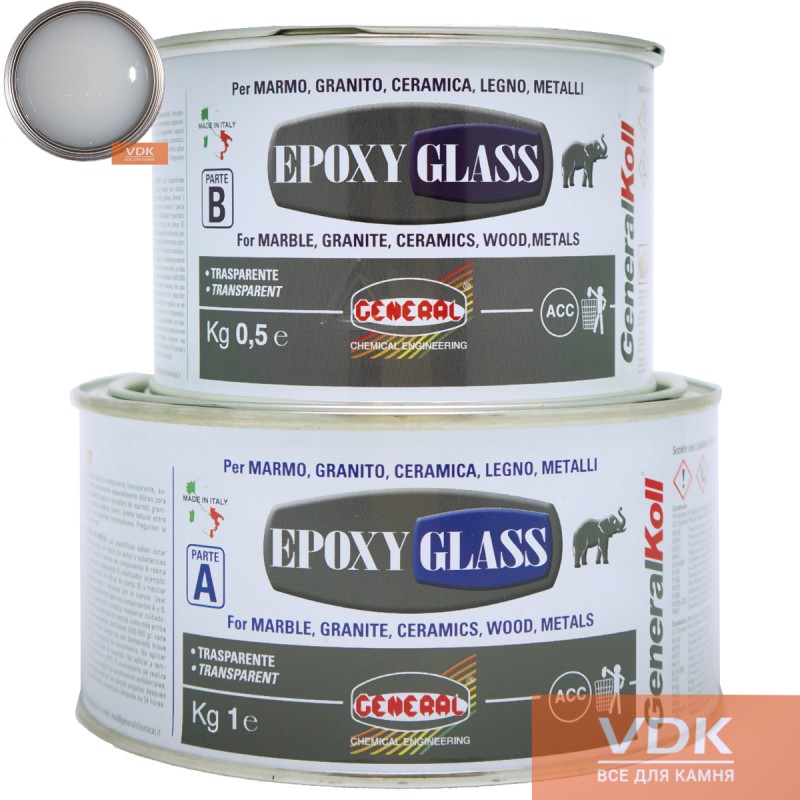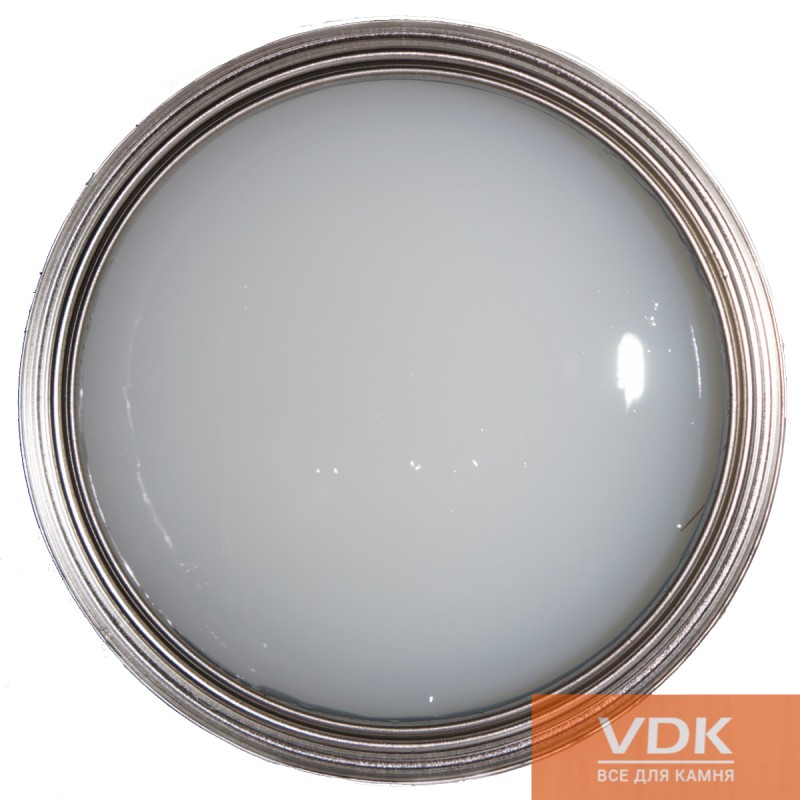EPOXY GLASS Bi-component epoxy adhesive 1,5kg
-
2 665 грн.
- Brand: GENERAL - Italy
- Weight: 1.5 kg
| Characteristics | |
| Colour | transparent, milk |
| Consistency | gel |
| The weight | 1,5kg |
Description
EPOXY GLASS
Bi-component epoxy adhesive, thixotropic, colourless, practically odourless.
Line epoxy
Function
Formulated for the permanent bonding of granites and narbles , it is suitable for bonding any kind of natural or engineered stone also to heterogeneous materials as it performs a good and very good adhesion on wood, metal, glass, concrete. After hardening, it is characterized by its vitreous structure. Adheres even on difficult surfaces or humid materials where the polyester adhesive have poor or null adhesion. Its tixotropic characteristic makes is suitable for application on vertical surfaces and the negligible shrinkage allows the reparation of deep micro-crackings and hollows by only one operation.
Materials Bonding of any kind of stone and ceramic materials, both natural and synthetic, between them or to heterogeneous supports such as metal, wood, glass, concrete
How to use
- PREPARATION OF THE SURFACES. Clean the surfaces carefully and remove any trace of dust, concrete, gypsum, greasy substances, etc. Better adhesion if the support is slightly roughened.
- PREPARATION OF THE TEXTURE. Mix carefully the component A and the component B in the exact ratio as indicated A:B=100:50. It is suggested the mixing of small quantity (max. 400-500 grams) to avoid a too much short time of use before the hardening reaction starts.
- APPLICATION. Apply the obtained texture on the clean and dry support by using a toothed putty knife. In case of application to the iron, it is advisable the iron is sandblasted or anyway roughened.
- After 8 to 10 hours it is possible to move the bonded piece and after 24 hours from the application the piece can be eventually grinded/polished
Packaging
Set A+B 100:50 Comp A = KG 1 Comp B = KG 0,5
Characteristics -
Very good adhesion between different materials and supports
- Adhesion on humid materials
- High resistance to the atmospheric agents, acid rains, sea water
- High resistance to the solvents, basic environment (so, suitable for concrete) and acids
- Almost null shrinkage
- Practically odourless
Important
- Avoid the use and the bonding at temperatures lower than 10°C (50°F). It cannot stand the frost
- It doesn't adhere to silicon
- It doesn't adhere to polyethilene
- It doesn't adhere to teflon
- It doesn't adhere to some plastics











